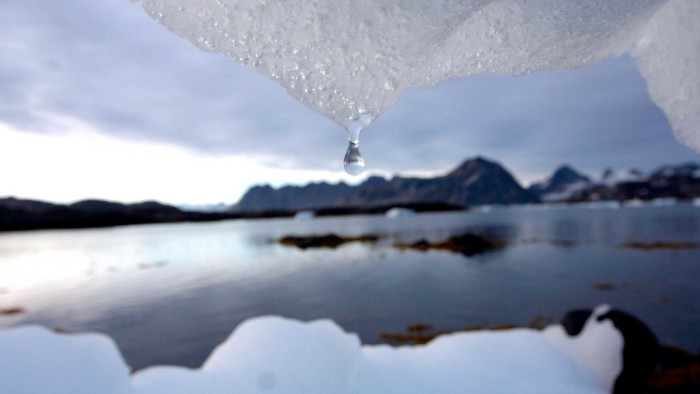Chinese cargo ship sets sail for Arctic short-cut

Roula Khalaf, Editor of the FT, selects her favourite stories in this weekly newsletter.
A Chinese cargo ship is attempting the country’s first ever commercial transit of the Northeast Passage above Russia, as a changing climate opens a short-cut that promises to reduce shipping times between China and Europe.
The Yong Sheng, a 19,000-tonne vessel operated by state-owned Cosco Group, set sail on August 8 from Dalian, a port in northeastern China, bound for Rotterdam. According to an announcement on Cosco’s website, the journey via the Bering Strait could shave as much as 15 days off the traditional route through the Suez Canal and Mediterranean Sea.
Also known as the Northern Sea Route, the Northeast Passage is Europe’s answer to the fabled Northwest Passage that threads its way across northern Canada and then around Alaska. Sir Francis Drake and Captain James Cook were among the many adventurers and entrepreneurs who coveted the routes as potential short-cuts to lucrative trading markets in East Asia.
The longer Northeast Passage, at approximately 5,400km, has the advantage of offering a relatively straight journey over the top of the Eurasian landmass. Its shorter North American rival, by contrast, twists and turns through narrow, dangerous channels in the Canadian Arctic. The Northwest Passage claimed the life of explorer Sir John Franklin and the crews of his two ships, HMS Erebus and HMS Terror, in 1847.
First traversed in 1879 by a Swedish explorer, Baron Adolf Erik Nordenskiold, the Northeast Passage has more recently attracted serious attention from shipping companies as climate change opens Arctic sea lanes for longer periods each year. Russian authorities have granted 372 permits this year to ships intent on sailing all or some of the passage, compared to 46 full transits last year and only four in 2010.
Arctic shipping is taking off faster than the other big economic prospect for the polar region, oil exploration, where companies such as Royal Dutch Shell and Cairn Energy have been plagued by delays.
But analysts caution that it will be years before the route, which is only passable for a few months, is commercially viable let alone a rival to the Suez Canal, which handled more than 17,000 ships in 2012.
“Climate change is certainly opening new Arctic shipping routes,” said Cameron Dueck, a Canadian author who sailed the Northwest Passage in 2009. “But the most common routes through the [Arctic] continue to have ice even in the warmest years, meaning shipping companies will have to be selective and opportunistic in using them.”
Valentin Davydants, captain of Russia’s Atomflot fleet of nuclear-powered icebreakers, estimates that by 2021 15m tonnes of cargo will use the full route. In addition, 15m tonnes of liquefied natural gas and 10m tonnes of oil will use the route partially to leave Russia’s northern Arctic shore.
That pales into insignificance compared with sea freight in the Suez Canal where in 2011 almost 18,000 vessels transported 929m tonnes of cargo.
“You might see some oil and gas leave Russia – but I think the day that container ships will choose to use the northern sea route for economic reasons is quite a long way off,” said one of Norway’s biggest shipowners.
But some see great potential if the Arctic route can bring its costs down, which is indeed happening as the melting sea ice means icebreakers are no longer required under Russian rules for all journeys
Besides the Suez Canal, the traditional maritime route linking China to the EU passes through the contested South China Sea, the Strait of Malacca and pirate-infested waters in the Indian Ocean.
The voyage between Dalian and Rotterdam along this southerly route takes 48 days. By sailing the Northeast Passage, the Yong Sheng is expected to reach its destination on September 11 – a transit time of only 35 days.
China, which claims to be a “near-Arctic state”, has become more aggressive in asserting its interests in the northern Pacific and Arctic oceans. In May, Beijing secured “permanent observer” status at the Arctic Council, a group uniting the eight countries with territory in the polar region.
Comments